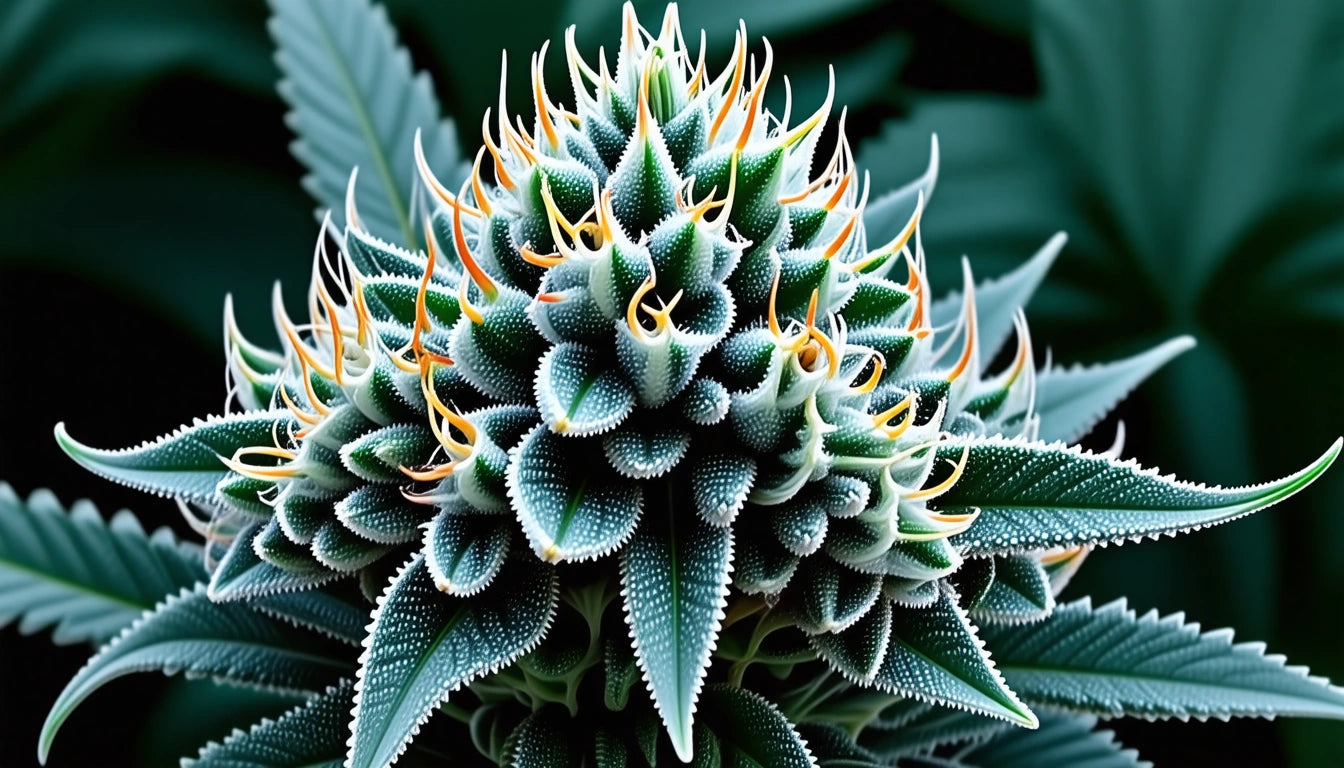- What is Bud? Understanding Cannabis Flower
- The Cannabis Flowering Process Explained
- Budding Timeline: How Long Does the Process Last?
- Identifying Quality Bud: Appearance and Characteristics
- Common Budding Problems and Solutions
- Bud Storage and Longevity: Does Bud Go Bad?
- The Future of Cannabis Cultivation and Consumption
Understanding Bud: A Comprehensive Guide to Weed, Flowering, and Budding Process
Cannabis cultivation culminates in the production of buds, the prized flowers that contain the highest concentration of cannabinoids and terpenes. Whether you're a curious newcomer or looking to deepen your knowledge, understanding what bud is and how it develops is essential for appreciating this complex plant.
What is Bud? Understanding Cannabis Flower
When people ask "what is bud" or "what is bud weed," they're referring to the flowering part of the female cannabis plant. These flowers are the most valuable component of cannabis, containing the highest concentrations of cannabinoids like THC and CBD, along with aromatic terpenes that give each strain its unique profile.
The term "flower" is often used interchangeably with "bud" in the cannabis industry. What is a flower bud exactly? It's the reproductive structure of the female cannabis plant, designed to catch pollen from male plants. When female plants remain unpollinated, they continue to develop resinous buds in an effort to catch male pollen, resulting in the potent, trichome-covered flowers that consumers seek.
The Cannabis Flowering Process Explained
What Happens During Budding?
The flowering stage begins when the plant receives 12 hours of light and 12 hours of darkness each day. During this phase, several key developments occur:
- Female plants develop pistils (hair-like structures) at nodes where branches meet the main stem
- These pistils eventually form calyxes, which cluster together to create buds
- Trichomes (resin glands) develop on the surface of buds, producing cannabinoids and terpenes
- The plant focuses energy on bud development rather than vegetative growth
Understanding what is budding in plants helps cultivators optimize conditions for maximum yield and potency. According to this comprehensive growing guide, factors like light intensity, nutrient balance, and environmental controls all influence the quality of the final product.
Budding Timeline: How Long Does the Process Last?
A common question among cultivators is "how long does budding last?" The flowering period varies by strain, but typically ranges from 7-12 weeks. Indica-dominant strains generally flower faster (7-9 weeks) while Sativa-dominant varieties may take longer (10-12 weeks or more).
The flowering process can be broken down into several phases:
Weeks 1-3: Pre-Flowering
During this initial stage, plants show their sex and females begin developing their first pistils. This is when what does budding look like becomes apparent, as small white hairs emerge at node sites.
Weeks 3-6: Mid-Flowering
Buds begin to form in earnest, gaining size and developing more trichomes. The plant may stretch significantly during this period as it allocates resources to flower production.
Weeks 6-Harvest: Late Flowering
Buds fatten and become denser, while trichome production increases dramatically. Pistils begin changing from white to amber or brown, signaling approaching maturity. For those wondering how long is bud/s development, this final stage is crucial for determining harvest timing.
Identifying Quality Bud: Appearance and Characteristics
What does bud look like when it's high quality? Premium cannabis flowers typically display several key characteristics:
- Dense, well-formed structure (not loose or airy)
- Rich coloration (green with possible purple, blue, or orange hues)
- Abundant trichome coverage creating a frosty appearance
- Vibrant pistils (hairs) that have darkened from white to orange, red, or brown
- Strong, distinctive aroma profile
When examining buds, look for visual indicators of quality and potency. This guide to quality varieties offers additional insights on identifying premium flower.
For businesses looking to showcase their premium buds, custom pre-roll packaging solutions can help highlight quality while maintaining freshness and compliance with local regulations.
Common Budding Problems and Solutions
Even experienced growers face challenges during the flowering stage. One of the most devastating issues is bud rot (Botrytis), which can ruin an otherwise successful harvest.
According to this resource on managing bud rot, prevention strategies include:
- Maintaining proper airflow and humidity levels (40-50% during flowering)
- Avoiding overcrowding of plants
- Implementing defoliation techniques to improve air circulation
- Regular inspection of buds for early signs of infection
Other common issues include nutrient deficiencies, light burn, and pest infestations, all of which can impact the quality and quantity of your harvest.
Bud Storage and Longevity: Does Bud Go Bad?
A frequent question is "does bud go bad?" and "how long does bud last?" While cannabis doesn't "expire" in the traditional sense, it does degrade over time, losing potency and flavor.
Properly stored cannabis can maintain its quality for 6-12 months. Beyond this timeframe, THC begins converting to CBN (a less psychoactive cannabinoid), resulting in diminished effects and altered characteristics.
To maximize longevity:
- Store in airtight glass containers
- Keep in cool, dark locations away from direct sunlight
- Maintain proper humidity levels (58-62%) using humidity control packs
- Avoid plastic bags or containers that create static and damage trichomes
The Future of Cannabis Cultivation and Consumption
As legalization expands, cultivation techniques continue to evolve. Advanced growing methodologies, genetic refinement, and scientific research are pushing the boundaries of what's possible with cannabis production.
For those wondering where to get bud or where is the bud available legally, the landscape continues to change. Currently, dispensaries in states with legal programs offer the safest access to quality-tested products. This article on industry costs provides insight into pricing structures and regional variations.
Understanding cannabis yield is also crucial for both commercial and personal growers. This resource on expected yields offers realistic projections based on growing conditions and techniques.
As consumer knowledge grows and cultivation practices advance, the quality and consistency of cannabis buds will continue to improve, offering even more refined experiences for both recreational and medicinal users.











Leave a comment
All comments are moderated before being published.
This site is protected by hCaptcha and the hCaptcha Privacy Policy and Terms of Service apply.